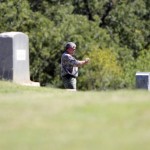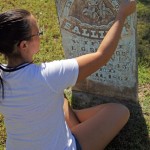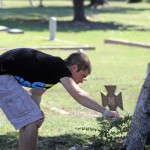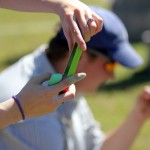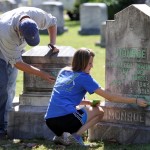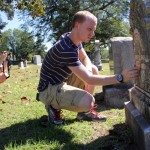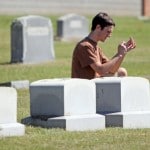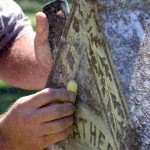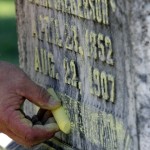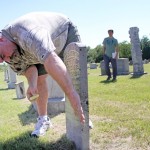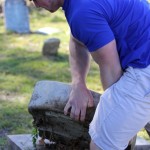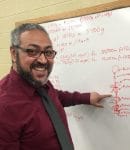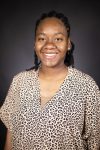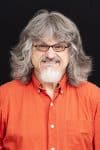What do science, community service, and cemeteries have in common?
If Southern Arkansas University’s Dr. Claude Baker is involved, they somehow come together to make perfect sense. Armed with iPads, smart phones and cameras in an old city cemetery, Baker’s SAU ecology class seeks data that will provide important answers to science-related questions. But, the documentation effort also benefits the community.
Anyone who knows Baker would not likely be surprised to see him lead his students to such an unexpected laboratory in the name of science and service. They know his penchant for finding answers where others fail to see them. They also would know that there is a personal tradition of service at the heart of his motivation. Baker learned by the example of his parents, who devoted their lives in volunteer service to their south Arkansas community, how important it is to give something back. Also a keen observer of history, Baker understands what past patterns tell us about where we are heading as a society.
Ecology is the science concerned with relationships between organisms (including humans) and their physical and social environments. It is also the science that examines the detrimental effects of modern civilization on the environment.
In the heat of the September sun, Baker and his class of about 20 students scour through the weathered cemetery capturing photographic evidence that will help them unravel the stories waiting to be read in the Magnolia Memorial Cemetery.
Using their modern technology, sidewalk chalk and good old-fashioned sweat equity, the group moves among the weathered headstones, chalking the surfaces to highlight the engraved history to better capture the images.
Asked what he expected to find in this unusual process, Baker speaks animatedly about the evidence the cemetery project would reveal, such as life tables and survivorship curves.
The information will get uploaded, dates will be recorded and statistics will result that reflect trends.
“There are tons of stuff here that tell us something,” said Baker. “By doing this, you get a glimpse of the community. You figure out when people showed up here. You learn a little bit about socioeconomic status. You see when different nationalities arrived in the area by the surnames. There is a whole world of information that a place like this holds.”
He divides his class into groups and assigns each group a range of years to look for. Baker shares tips with his students that will help make their individual searches easier.
For the group searching for headstones pre-dating 1900, he points to the higher terrain and the large, old, hardwood trees. Those are natural markers to where the earlier grave markers are normally found. Those students assigned to the post-1950 group, head toward a section dotted with shiny, polished granite tombstones toward the back of the sprawling cemetery.
Baker explains that in older parts of the cemetery you’ll likely see a trend of early deaths – steep infant mortality, people dying at earlier ages, etc.
“In some periods it will be very steep. We can go back in history and we can often track that to periods of epidemics or natural disasters,” he explains. “For the biology, we know that people showed up here in 1850. We can take the data and produce what we call life tables. We can graph it out and show how modern medicine has influenced life here.”
“As we move to newer areas of the cemetery, we will see longer lifespans, which can reflect the discovery of vaccines or medicines and better healthcare,” Baker said.
Records show that there was a time when women died off faster than men.
“Women often died in childbirth, but we have seen with progress, better healthcare and modern conveniences that women now live longer than men,” said Baker.
The cemetery research will provide data that will also help the class to construct what Baker calls an age pyramid. For instance, in Mexico, researchers find that the population is numbered with more young people than elderly, which gives a broader foundation for health statistics and economy.
In the United States, lifespans have increased so the population of elderly residents can be higher than the population of youth. That kind of imbalance comes with its own inherent impact on the environment and economy.
Baker’s students are instructed to pay attention to the trees, structures, and terrain of the cemetery, as well. The types of trees that flourish in the region tell something about the environment. Trees are also great historians, especially when it comes to determining past weather patterns.
Rosalee Meeks, a junior biology major from El Dorado, works intently in an older section of the cemetery. Meeks is pursuing her education at SAU with plans to work in environmental restoration with a focus on plants.
Meeks said her experience in south Louisiana viewing the aftermath of Hurricane Katrina is part of what sparked her desire to pursue biology to that end.
“Part of the devastation of Katrina was caused by people moving into and building in areas not intended for human habitation,” she said. “It was clear to see that some problems we bring on ourselves when we attempt to domesticate the earth.”
Her focus is steady and Baker only serves to flame her fascination in his classes.
“You never get bored in Dr. Baker’s class,” she said. “He finds interesting ways to relate things to what is going on in the world and his projections are usually right on.”
As Meeks knows, ecology teaches us that our environment is deeply linked to our survival. Human domestication of the earth and industrialization, mixed with increased longevity and the benefits and detriments of progress have left their mark on the environment. The future of humans and other earthly inhabitants are intertwined with the world around us. Finding ways to learn from our history, to correct bad patterns and to restore the environment is a necessity, according to Meeks.
“But while we are learning, we are also being of service to the community. It’s a win-win,” she said. “The more you learn, the more it gets you curious about things you never knew – especially if you never had the chance to be exposed. Somewhere along the way, you find you have a passion for something.”
Baker’s passion and energy are contagious.
John Wofford, a senior biology major from Delight, leaves Baker’s class every time with something of interest.
“His classes are great. He is so energetic and enthused with what he teaches, you just can’t help but to follow,” said Wofford. “Dr. Baker makes it easy and fun to learn.”
As Baker shares his secrets and his passion for knowledge and service, the students discover there is a lifetime of information that can be derived from what they document this day.
After the research information is gleaned and sorted, the students will upload the photographs of the headstones to a genealogy-related website called FindAGrave.com, which links people around the world to official records that can help them in their genealogy work. According to Baker, there are 800,000 people working on the project that is intended to enumerate and document every grave to create a virtual, online record for every cemetery in the United States.
The Magnolia cemetery has around 4,000 graves, including one that holds a Civil War general. Thanks to the invention of the Internet and volunteers like Dr. Baker and his students, family research has never been easier and the enormous national project will be 4,000 grave sites closer to success.




